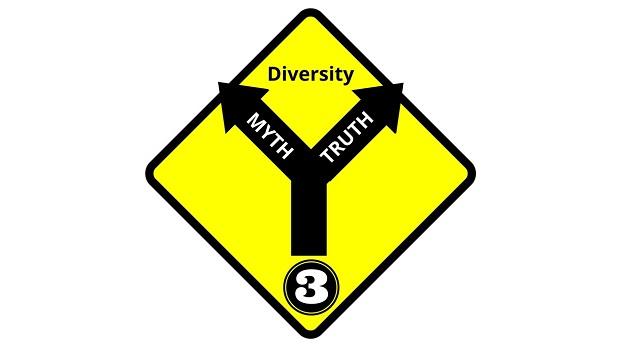“Sometimes you hear a person speak the truth and you know that they are speaking the truth. But you also know that they have not heard themselves, do not know what they have said: do not know that they have revealed much more than they have said. This may be why the truth remains, on the whole, so rare.”
– James Baldwin, Just Above My Head
Over the past few weeks, The Winters Group team has been engaging in more critical thought and dialogue about how leaders can and should strategically embed justice into their practices, policies and enacted cultural values. Over the past six months or so, we’ve collectively experienced this “reckoning” and intensified curiosity among leaders, organizations and white people alike to own their role in disrupting racism and white supremacy. To date, many organizations and leaders have used public-facing statements and commitments to underscore their evolved (or newfound) investment in dismantling racism.
In fact, shortly after the murder of George Floyd, my colleague and I analyzed some of these statements and identified a few themes in leadership and corporate responses to racial injustice. I’ll add that these statements do not necessarily represent what I will propose as truth-telling and reconciliation, any more than they are reactive measures companies had to take to ensure their stated values around inclusion and equity aligned with their public brand. We tracked three themes in these statements:
Shock & Distancing:
These statements communicated a sense of shock in response to acts of racism (“We can’t believe these issues continue to persist in our country.”) and/or distancing (“Racism has no place in our society…” “We won’t let the actions of a few define our values or who we are as a collective.”). In other words, “Racism is the problem of those [other white] people over there—not us.” Statements that fall within this sentiment were also likely to ascribe judgement to forms of protest in response to injustice, amplifying ‘how’ Black folks chose to protest versus the ‘why.’ Since we’re talking anatomy and making justice “practical,” I think it is only fair to give you an example of what this sounded like. Consider this message from David Solomon, CEO of Goldman Sachs, sent to employees following the murders of George Floyd, Ahmaud Arbery and Breonna Taylor:
“I continue to grieve for the lives of George Floyd, Ahmaud Arbery, Breonna Taylor and countless other victims of racism. I understand the outrage that followed these senseless acts and fully support the right and need to peacefully protest. However, the violence we’ve seen in some cities over the past two nights has no place in our society and threatens to undermine the message of harmony and reconciliation that we need today more than ever.”
Sometimes, ‘distancing’ sounds like white people distinguishing themselves from the violence and harm caused by other white people. It is a mechanism to preserve one’s interpretation of their ‘goodness’ and morality. Other times, distancing sounds like undermining the validity of Black rage and rebellion, which widens the empathy and humanity gap and stifles ones’ ability to truly lean into the experiences of another. If my reaction to pain is interpreted as senseless to you, can you truly understand my pain?
Solidarity & Empathy:
Some statements took the shock & distancing a bit further and focused on communicating empathy and solidarity with the Black community. This sounded like, “We stand with the Black Community… we understand this is painful.” These statements were impactful and heartfelt. Even competing companies like Adidas and Nike unified on the imperative for organizations and individuals alike to “stand up against racism,” “stand with” the Black community and be better allies. Offering another example, Netflix’s and Activision Blizzard’s tweets following the murder of George Floyd:
To be silent is to be complicit.
— Netflix (@netflix) May 30, 2020
Black lives matter.
We have a platform, and we have a duty to our Black members, employees, creators and talent to speak up.
— Activision Blizzard (@ATVI_AB) June 1, 2020
Statements that fell within this sentiment were also well-intentioned, but certainly not without critique. I, among others, was challenged (and still am) by the gap between the organizations’ rhetoric and enacted practices. Just recently, Activision Blizzard was in the media for resisting diversity hiring accountability measures by AFL-CIO.
Compassion & Action:
Then there were statements that emphasized DOING something — in most cases by committing to donations and partnerships with community organizations influencing change in the community. This sounds like, “We will be donating to…” or “We will be supporting efforts by…” While these statements moved beyond shock and empathy, and there were stated commitments to ‘do something,’ the doing often involved aligning with external, ‘respectable,’ national institutions, with little attention to grassroots or equal attention to the ways racism must be addressed within the walls of their own organization.
Since the summer of 2020, this sentiment has been commonplace for many well-intentioned organizations. Likewise, global forums and leadership councils focused on racism, racial equity, (and — if they’re really ‘bout it — white supremacy) have become more common.
I am here for most of it… AND I would offer that truth-telling and reconciliation go well beyond shock, empathy, solidarity and action through donations. In our initial analysis of these statements, we realized several fundamental components of truth-telling and reconciliation were missing from most statements:
I would offer that truth-telling and reconciliation go well beyond shock, empathy, solidarity and action through donations. Several fundamental components of truth-telling and reconciliation were missing from most statements... Share on X(1) Ownership and direct communication of the organization, industry or leaders’ complicity in racism and white supremacy.
(2) Acknowledgment of the history of harm caused by the organization, industry and leaders’ complicity.
(3) Actions that address past and present harm experienced by Black employees, customers or constituents.
(4) A plan of action that includes engaging the communities most impacted (within and beyond the org) in solution and strategy.
The folks at Insight Center for Community Economic Development put it beautifully in their framework for centering Blackness as a path to liberation for all:
“At the core of a truth and reconciliation process is the recognition that injustice took place and a retelling of history that features the voices and experiences of those who survived those injustices. It is a truth-telling of how things came to be, a naming of responsible parties, and an admittance of consequences — intentional or not.”
I want to emphasize “a retelling of history that features the voices and experiences of those who survived those injustices.” Centering those most impacted is worth restating as many organizations post statements, share strategy, partner with DEI firms… yet perpetuate the cycle of pushing out Black women who dare challenge their status quo (#MakeItMakeSense).
Centering those most impacted is worth restating as many organizations post statements & partner with DEI firms... yet perpetuate the cycle of pushing out Black women who dare challenge their status quo #MakeItMakeSense Share on XIf you are a leader, consultant, communications officer or white person seeking to model truth telling and reconciliation in a way that centers justice. I offer these reflections and considerations in closing:
- Am I using language that makes it clear WHO is taking ownership, who has been complicit, who needs to do more work in this process? There’s irony in many American companies’ incessant preference to use “we” language in these statements when everything else about how American and corporate culture works is rooted in individualism. If you’re a leader, write in first person, using “I” language. Acknowledge your power, your privilege, your complicity. When using “we,” be clear on who you’re referring to — white colleagues, white people, leaders, the industry. Our roles in dismantling this system are not the same.
- Have I sought out the perspective of those who have been most impacted by racism and white supremacy in my organization’s context? I am always fascinated by the prospective calls I join where the entire ‘project team’ owning the initiative is white, with little to no consult or significant input from Black employees or constituents.
- To what extent have we made right on our wrongs and taken deliberate action to repair harm? Harm might look like unfair termination of employment (which has a significant impact on one’s quality of life), marketing campaigns that target unhealthy products to already impoverished communities, or the perpetual gaslighting, microaggressions and emotional tax Black employees experience every day in your workplace. What have you done to make amends?
- What actions will we take to ensure those most impacted are part of the inquiry, design and feedback processes as we build and evolve a strategy? Furthermore, how will we compensate them for their engagement and labor? If you are partnering with an external firm, be critical of their methodologies and approach to the work. Does it maintain status quo or pacify the majority? Are they in community with practitioners who are leveraging a justice orientation?
Justice work isn’t just about compelling statements and campaigns. It is certainly not about leveraging DEI firms as window-dressing to mask the deeply entrenched and harmful practices that persist within an organization, nor should it be centered on maintaining the goodness and sanctity of whiteness. Truth telling and reconciling are requisite to achieving any form of equity or liberation. Put simply…
“The truth will set [us all] free.” – Biblical Verse (John 8:32)
Ya’ll — the stakes are high.
Justice work isn’t just about compelling statements and campaigns. It is certainly not about leveraging DEI firms as window-dressing to mask the deeply entrenched and harmful practices that persist within an organization. Share on X



















